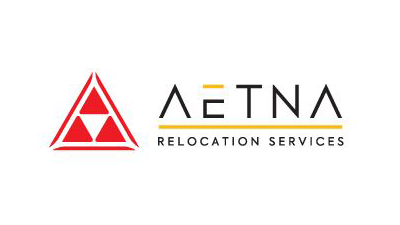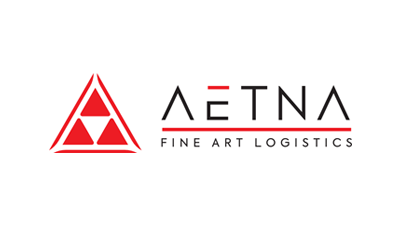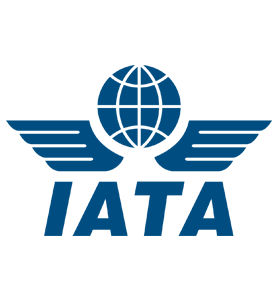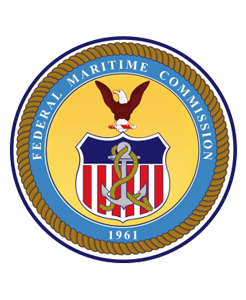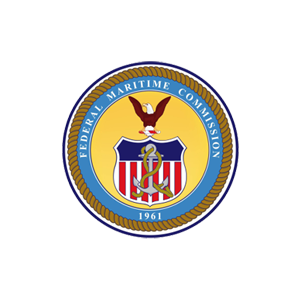Incoterms 2020
Incoterms 2020
Incoterms are a common set of rules issued by the International Chamber of Commerce which define the roles and responsibilities of sellers and buyers with respect to the sale of goods in international transactions. There are seven Incoterms rules for any mode(s) of transport and four Incoterms rules specific to sea and inland waterway transport.
-
EXW – Ex Works
In an “Ex Works” agreement, the seller’s responsibility is to make the goods available for pick-up at their premises or another named place (factory, warehouse, etc.). The seller is not responsible for loading the goods onto the buyer’s vehicle or for any transportation beyond their own premises.
“EXW” is often used when the buyer has a greater ability and willingness to manage the transportation process and associated costs. It is important for both parties to clearly define the named place of delivery to avoid any misunderstandings.
Key points:
1. Delivery Point: The seller fulfills their obligation when they make the goods available at their premises or another named place agreed upon in the contract.
2. Transportation: The buyer is responsible for arranging and paying for all transportation, including loading the goods onto their chosen mode of transport, covering the costs and risks associated with the transportation.
3. Risk and Insurance: The risk is transferred from the seller to the buyer at the agreed-upon delivery point. The buyer is responsible for obtaining insurance if desired.
4. Import and Export Formalities: The buyer is responsible for all import and export formalities, including obtaining any necessary licenses or permits.
5. Costs: The buyer bears all costs from the point of origin to the final destination, including transportation, customs duties, and other charges.
-
FCA – Free Carrier
In a “Free Carrier” agreement, the seller delivers the goods to the carrier, or another person nominated by the buyer at the seller’s premises, or another named place (factory, warehouse, terminal, etc.).
“FCA” is a flexible term that allows the parties to choose a specific location for the delivery point, which can be a critical consideration depending on the nature of the goods and the transportation logistics.
Key Points:
1. Delivery Point: The seller fulfills their obligation when they deliver the goods, cleared for export, to the carrier or another person nominated by the buyer at the named place agreed upon in the contract.
2. Transportation: The seller is responsible for delivering the goods to the agreed upon delivery point where the carrier, or person nominated by the buyer, accepts the goods for transportation. The seller is responsible for loading the goods onto the buyer’s vehicle, or a third-party carrier’s vehicle, at the named place of delivery. At this point, the costs and risks transfer to the buyer. The buyer is responsible for arranging and paying for the main carriage (transportation to the final destination).
3. Risk and Insurance: The risk transfers from the seller to the buyer once the goods are delivered to the carrier and the named place and loaded onto the carrier’s vehicle. The buyer is responsible for obtaining insurance if desired.
4. Import and Export Formalities: The seller is responsible for export formalities, while the buyer is responsible for import formalities, including any customs duties or taxes.
-
FAS – Free Alongside Ship*
In a “Free Alongside Ship” agreement, the seller’s responsibility is to deliver the goods alongside the vessel (e.g., on a quay or barge) nominated by the buyer at the named port of shipment.
“FAS” is often used when the buyer has the means and expertise to handle the loading of the goods onto the vessel and is willing to take on the associated risks and costs from that point forward. It is important for both parties to clearly define the named vessel and port of shipment to avoid any misunderstandings.
Key Points:
1. Delivery Point: The seller fulfills their obligation when they deliver the goods alongside the named vessel at the named port of shipment. The goods are placed at the disposal of the buyer on the quay or in lighters at the named port of shipment agreed upon in the contract.
2. Transportation: The seller is responsible for the costs and risks associated with delivering the goods to the named port of shipment and placing them alongside the vessel. The buyer is responsible for loading the goods onto the vessel, covering the costs and risks of the main carriage (transportation from the port of shipment to the final destination).
3. Risk and Insurance: The risk transfers from the seller to the buyer once the goods are placed alongside the vessel at the named port of shipment. The buyer is responsible for obtaining insurance if desired.
4. Import and Export Formalities: The seller is responsible for export formalities, while the buyer is responsible for import formalities, including any customs duties and taxes.
-
FOB – Free on Board*
In a “Free on Board” agreement, the seller delivers the goods on board the vessel nominated by the buyer at the named port of shipment or procures the goods already so delivered.
“FOB” is a widely used Incoterm for goods transported by sea. It provides a clear point at which the risk and responsibility shift from the seller to the buyer. It is important for both parties to clearly define the named port of shipment to avoid any misunderstandings.
Key Points:
1. Delivery Point: The seller fulfills their obligation when they deliver the goods on board the named vessel at the named port of shipment agreed upon in the contract.
2. Transportation: The seller is responsible for the costs and risks associated with delivering the goods to the named port of shipment and loading them on board the vessel. Once the goods are on board, the risk transfers from the seller to the buyer. The buyer is then responsible for the main carriage (transportation from the port of shipment to the final destination).
3. Risk and Insurance: The risk transfers from the seller to the buyer once the goods are on board the vessel at the named port of shipment. The buyer is responsible for obtaining insurance if desired.
4. Import and Export Formalities: The seller is responsible for export formalities, while the buyer is responsible for import formalities, including any customs duties and taxes.
-
CFR – Cost and Freight*
“CFR” is a term that indicates that the seller is responsible for the costs and risks associated with delivering the goods to the named port of destination. It's important for both parties to clearly define the named port of destination in the contract to avoid any misunderstandings.
Key Points:
1. Delivery Point: The seller fulfills their obligation when they deliver the goods on board the vessel at the named port of destination agreed upon in the contract.
2. Transportation: The seller is responsible for the costs and risks associated with delivering the goods to the named port of destination and loading them on board the vessel. Once the goods are on board, the risk transfers from the seller to the buyer. The buyer is then responsible for the main carriage (transportation from the port of destination to the final destination).
3. Costs: The seller is responsible for the costs associated with the transportation of the goods to the named port of destination, including freight charges, terminal handling charges, and other costs related to getting the goods on board the vessel.
4. Risk and Insurance: The risk transfers from the seller to the buyer once the goods are on board the vessel at the named port of shipment. The buyer is responsible for obtaining insurance if desired.
5. Import Formalities: The buyer is responsible for import formalities, including customs clearance, duties, and taxes.
-
CIF – Cost Insurance and Freight*
In a “Cost Insurance and Freight” agreement, the seller delivers the goods on board the vessel nominated by the buyer at the named port of shipment or procures the goods already so delivered.
“CIF” is a term that indicates that the seller is responsible for the costs, insurance, and risks associated with delivering the goods to the named port of destination. It’s important for both parties to clearly define the named port of destination in the contract to avoid any misunderstandings.
Key Points:
1. Delivery Point: The seller fulfills their obligation when they deliver the goods on board the vessel at the named port of destination agreed upon in the contract.
2. Transportation: The seller is responsible for the costs and risks associated with delivering the goods to the named port of destination and loading them on board the vessel. Once the good are on board, the risk transfers from the seller to the buyer. The buyer is then responsible for the main carriage (transportation from the port of destination to the final destination).
3. Costs: The seller is responsible for the costs associated with the transportation of the goods to the named port of destination, including freight charges, terminal handling charges, and other costs related to getting the goods on board the vessel. The seller is also responsible for obtaining and paying for maritime insurance to cover the risk of loss or damage to the goods during sea voyage.
4. Risk and Insurance: The risk transfers from the seller to the buyer once the goods are on board the vessel at the named port of destination. The seller is required to provide insurance to cover the risk of loss or damage to the goods during sea transportation.
5. Import Formalities: The buyer is responsible for import formalities, including customs clearance, duties, and taxes.
-
CPT – Carriage Paid To
“CPT” is a term that indicates that the seller is responsible for the costs and risks associated with transporting the goods to the named place of destination. It’s important for both parties to clearly define the named place of destination in the contract to avoid any misunderstandings.
Key Points:
1. Delivery Point: The seller fulfills their obligation when they deliver the goods to the carrier or another person nominated by the seller at the named place of destination agreed upon in the contract.
2. Transportation: The seller is responsible for the costs and risks associated with transporting the goods to the named place of destination. Once the goods are delivered to the carrier, the risk transfers from the seller to the buyer. The buyer is then responsible for the main carriage (transportation from the named place of destination to the final destination).
3. Costs: The seller is responsible for the costs associated with transporting the goods to the named place of destination, including freight charges and other transportation-related costs.
4. Risk and Insurance: The risk transfers from the seller to the buyer once the goods are delivered to the carrier at the named place of destination. The buyer is responsible for obtaining insurance if desired.
5. Import Formalities: The buyer is responsible for import formalities, including customs clearance, duties, and taxes.
-
CIP – Carriage and Insurance Paid To
“CIP” is a term that indicates that the seller is responsible for the costs, insurance, and risks associated with the transporting of goods to the named place of destination. It’s important for both parties to clearly define the named place of destination in the contract to avoid any misunderstandings.
Key Points:
1. Delivery Point: The seller fulfills their obligation when they deliver the goods to the carrier, or another person nominated by the seller at the named place of destination agreed upon in the contract.
2. Transportation: The seller is responsible for the costs and risks associated with transporting the goods to the named place of destination. Once the goods are delivered to the carrier, the risk transfers from the seller to the buyer. The buyer is then responsible for the main carriage (transportation from the named place of destination to the final destination).
3. Costs: The seller is responsible for the costs associated with transporting the goods to the named place of destination, including freight charges, insurance premiums, and other transportation-related costs.
4. Risk and Insurance: The risk transfers from the seller to the buyer once the goods are delivered to the carrier at the named place of destination. The seller is also required to provide insurance covering the risk of loss or damage to the goods during transportation.
5. Import Formalities: The buyer is responsible for import formalities, including customs clearance, duties, and taxes.
-
DAP – Delivery at Place
"DAP" is a term that indicates that the seller is responsible for the costs and risks associated with transporting the goods to the named place of destination and unloading them at that location. The term is designed to be flexible and can be used for any mode of transportation.
Key Points:
1. Delivery Point: The seller fulfills their obligation when they deliver the goods, ready for unloading, at the named place of destination agreed upon in the contract.
2. Transportation: The seller is responsible for the costs and risks associated with transporting the goods to the named place of destination. The seller is also responsible for unloading the goods at the destination.
3. Costs: The seller is responsible for the costs associated with transporting the goods to the named place of destination, including freight charges and other transportation-related costs.
4. Risk: The risk transfers from the seller to the buyer once the goods are ready for unloading at the named place of destination.
5. Import Formalities: The buyer is responsible for import formalities, including customs clearance, duties, and taxes.
-
DPU – Delivery at Place Unloaded
“DPU” is a term that indicates that the seller is responsible for the costs and risks associated with transporting the goods to the named place of destination and unloading them at that location. It is designed to be flexible and can be used for any mode of transportation.
Key Points:
1. Delivery Point: The seller fulfills their obligation when they deliver the goods, ready for unloading, at the named place of destination agreed upon in the contract.
2. Transportation: The seller is responsible for the costs and risks associated with transporting the goods to the named place of destination. The seller is also responsible for unloading the goods at the destination.
3. Costs: The seller is responsible for the costs associated with transporting the goods to the named place of destination, including freight charges and other transportation-related costs.
4. Risk: The risk transfers from the seller to the buyer once the goods are ready for unloading at the named place of destination.
5. Import Formalities: The buyer is responsible for import formalities, including customs clearance, duties, and taxes.
-
DDP – Delivery Duty Paid
"DDP" is a term that indicates a high level of responsibility on the part of the seller, as they are required to take care of all aspects of the transportation, import duties, and other formalities. It provides the buyer with a delivered and cleared product at their specified location.
Key Points:
1. Delivery Point: The seller fulfills their obligation when they deliver the goods, cleared for import, at the named place of destination agreed upon in the contract.
2. Transportation: The seller is responsible for the costs and risks associated with transporting the goods to the named place of destination. This includes arranging and paying for the main carriage (transportation from the seller's location to the buyer's location).
3. Costs: The seller is responsible for all costs associated with delivering the goods to the named place of destination, including transportation costs, duties, taxes, and other charges upon importation.
4. Risk: The risk transfers from the seller to the buyer once the goods are delivered to the named place of destination.
5. Import Formalities: The seller is responsible for completing all import formalities, including customs clearance, and paying all import duties and taxes.



